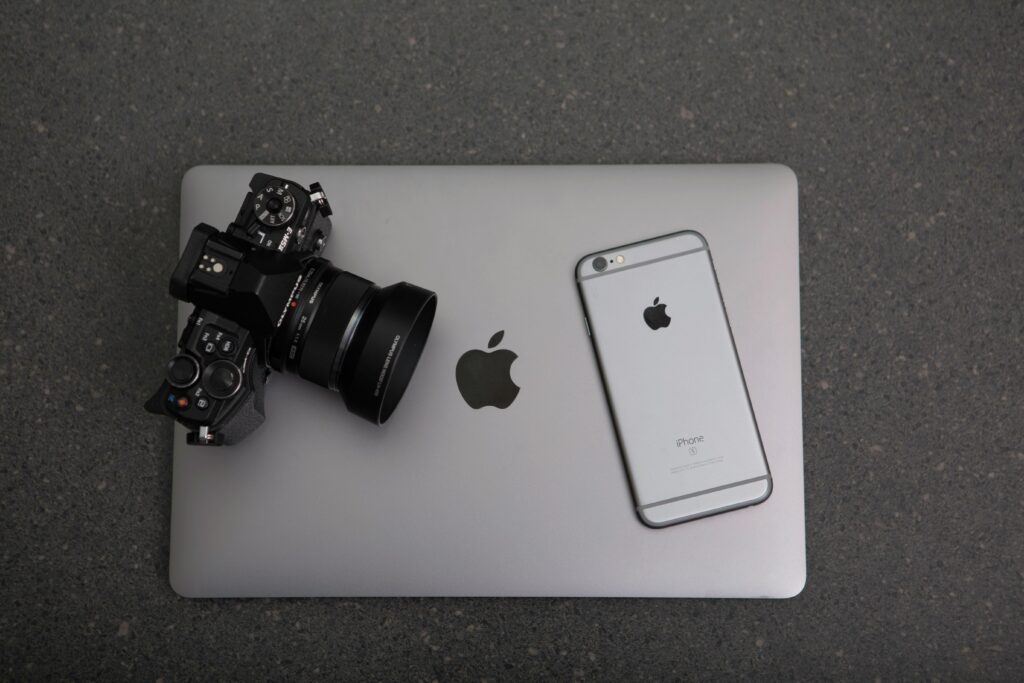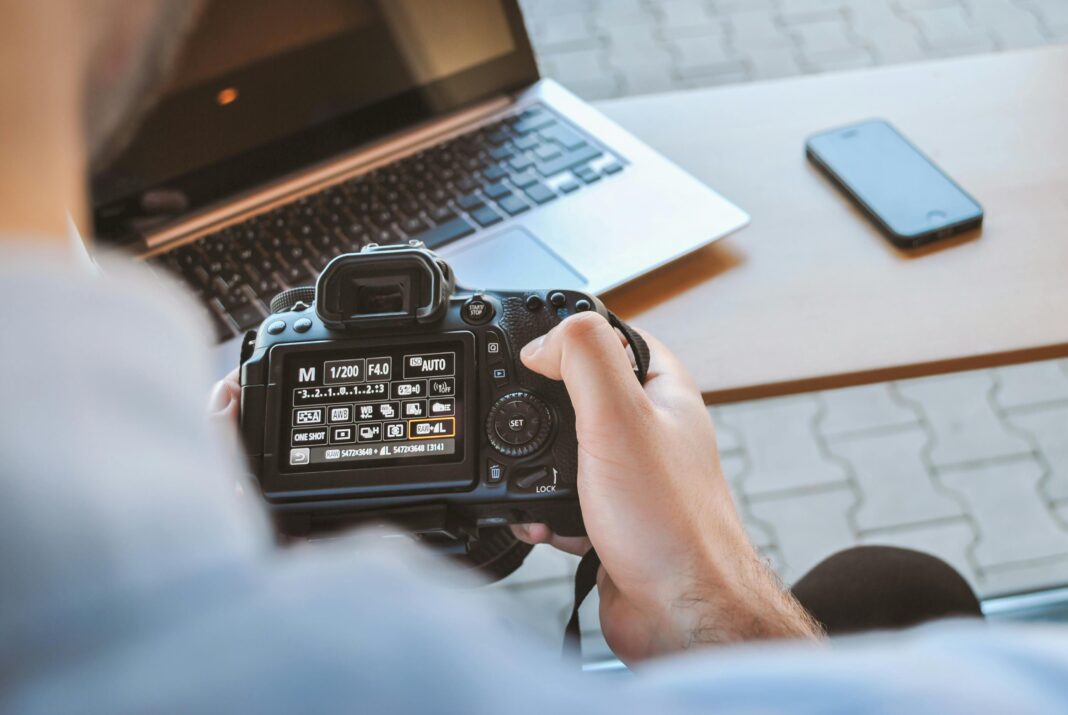The debate between DSLR cameras and smartphone cameras has become increasingly relevant as mobile technology continues to advance at a rapid pace. While smartphones have made photography more accessible than ever before, DSLRs remain the gold standard for professional photographers and serious enthusiasts. This comprehensive comparison will examine every aspect of both devices—image quality, lens flexibility, low-light performance, manual controls, portability, video capabilities, battery life, and price—to help you determine which tool best suits your photography needs.

We’ll go beyond surface-level comparisons and dive deep into the technical differences, practical applications, and real-world performance of each system. Whether you’re a hobbyist looking to upgrade your gear or a professional considering a more portable solution, this guide will provide the detailed insights you need to make an informed decision.
Image Quality: Sensor Size and Resolution
The Fundamental Role of Sensor Size
At the heart of every camera is its image sensor—the component that captures light and converts it into a digital image. DSLRs typically feature much larger sensors than smartphones, which gives them a significant advantage in image quality.
- Full-frame DSLRs have sensors measuring 36mm × 24mm (the same size as 35mm film).
- APS-C DSLRs use smaller sensors (approximately 22mm × 15mm) but are still vastly larger than smartphone sensors.
- Smartphone sensors are tiny by comparison, typically ranging from 1/2.55″ to 1/1.28″ (about 5mm × 7mm in larger models).
This size difference has profound implications:
- Light Gathering Ability: Larger sensors capture more light, resulting in better dynamic range and less noise.
- Depth of Field Control: Bigger sensors allow for more pronounced background blur (bokeh) at equivalent apertures.
- Pixel Size: While smartphones boast high megapixel counts (up to 200MP in some models), their individual pixels are much smaller, reducing light capture per pixel.
Resolution: Megapixels Aren’t Everything
Many smartphone manufacturers emphasize megapixel counts in their marketing, but this tells only part of the story:
- A 12MP full-frame DSLR will outperform a 108MP smartphone camera because each pixel is significantly larger (about 8.4µm vs. 0.8µm).
- Smartphones use pixel binning (combining multiple pixels into one) to improve low-light performance, effectively reducing resolution.
- DSLRs maintain true resolution across all lighting conditions without artificial processing.
Real-World Image Comparison
When examining 100% crops from both systems:
- DSLR images show finer details, more natural textures, and smoother gradients.
- Smartphone images often appear oversharpened with artificial-looking details due to aggressive noise reduction.
- Color science tends to be more accurate and consistent on DSLRs across different lighting conditions.
Lens Flexibility and Optical Zoom
The DSLR Lens Ecosystem
One of the greatest advantages of DSLR systems is their interchangeable lens design:
- Wide Variety of Options:
- Ultra-wide-angle (8-16mm) for landscapes and architecture
- Standard zoom (24-70mm) for everyday use
- Telephoto (70-200mm, 100-400mm) for sports and wildlife
- Macro lenses for close-up photography
- Fast prime lenses (f/1.2, f/1.4) for low light and portraits
- True Optical Zoom:
- Zoom lenses maintain full image quality throughout their range
- No digital interpolation or quality loss
- Specialized Optics:
- Tilt-shift lenses for architectural work
- Super-telephoto lenses (600mm+) for distant subjects
- Cinema lenses for video production
Smartphone Lens Limitations
While modern smartphones often feature multiple lenses (typically wide, ultra-wide, and telephoto), they’re fundamentally limited:
- Fixed Apertures: Most smartphone lenses have fixed apertures (usually around f/1.5-f/2.8) with no ability to change.
- Small Physical Size: Tiny lens elements can’t match the optical quality of DSLR lenses.
- Hybrid Zoom Systems:
- “Optical zoom” on smartphones is usually just switching between fixed focal lengths
- True optical zoom (like on the Sony Xperia 1 IV) remains rare
- Digital zoom still degrades quality significantly
- Artificial Bokeh:
- Portrait modes simulate shallow depth of field through software
- Often makes mistakes with complex subjects (hair, glasses)
- Can’t replicate the natural look of fast DSLR lenses
Practical Implications
- For Travel Photography: Smartphones are more convenient, but DSLRs offer superior quality, especially for landscapes.
- For Sports/Wildlife: DSLRs with long lenses are still unbeatable for capturing distant action.
- For Portraits: DSLRs provide more flattering, natural-looking results with authentic bokeh.
Low-Light Performance
DSLR Advantages in Dim Lighting
The combination of large sensors and fast lenses gives DSLRs a commanding lead in low-light situations:
- Native ISO Performance:
- Full-frame DSLRs can shoot clean images at ISO 6400 or higher
- APS-C models perform well up to ISO 3200
- Minimal noise and excellent color retention
- Wide Aperture Lenses:
- f/1.4 or f/1.8 primes gather significantly more light than smartphone lenses
- Enables faster shutter speeds to freeze motion
- Long Exposure Capabilities:
- Bulb mode for exposures longer than 30 seconds
- Better heat management for astrophotography
Smartphone Low-Light Techniques
Modern smartphones employ computational photography to compensate for small sensors:
- Night Mode:
- Takes multiple exposures and combines them
- Reduces noise but can create ghosting artifacts
- Often produces unnatural-looking brightening of shadows
- Multi-Frame Processing:
- Captures several images quickly to reduce noise
- Can’t match the single-shot quality of DSLRs
- Limitations:
- Small pixels become noisy quickly as ISO increases
- Long exposures are limited by heat and battery concerns
- Moving subjects often appear blurry in night modes
Side-by-Side Comparison
In a dimly lit restaurant scene:
- DSLR shot at ISO 3200 shows minimal noise with preserved details
- Smartphone night mode image appears cleaner at first glance but loses fine textures
- Color accuracy suffers more on the smartphone due to aggressive processing
Manual Controls and Customization
DSLR: Complete Creative Control
Professional DSLRs offer extensive manual settings:
- Exposure Triangle Adjustment:
- Precise shutter speed control (up to 1/8000s on high-end models)
- Aperture control via lens diaphragm
- Native ISO adjustments without quality loss
- Focusing Systems:
- Advanced phase-detection autofocus with numerous points
- Manual focus override with focus peaking
- Customizable AF tracking modes
- Custom Functions:
- Programmable buttons for quick access
- Save and recall shooting settings
- Extensive menu customization
- Raw File Support:
- Uncompressed raw files preserve maximum image data
- Greater flexibility in post-processing
Smartphone Manual Modes
While some smartphones offer “Pro” modes, they’re limited:
- Shallow Adjustment Range:
- Shutter speed typically limited to 1/10000s to 30s
- ISO range is narrow and becomes unusable at high values
- No true aperture control
- Focus Limitations:
- Touch-to-focus is imprecise compared to DSLR AF systems
- No physical focus ring for manual adjustments
- Processing Overrides:
- Even in manual mode, smartphones apply some processing
- Raw files still don’t contain as much data as DSLR raws
Workflow Implications
- DSLRs allow complete creative control from capture to edit
- Smartphones prioritize convenience over precise adjustments

